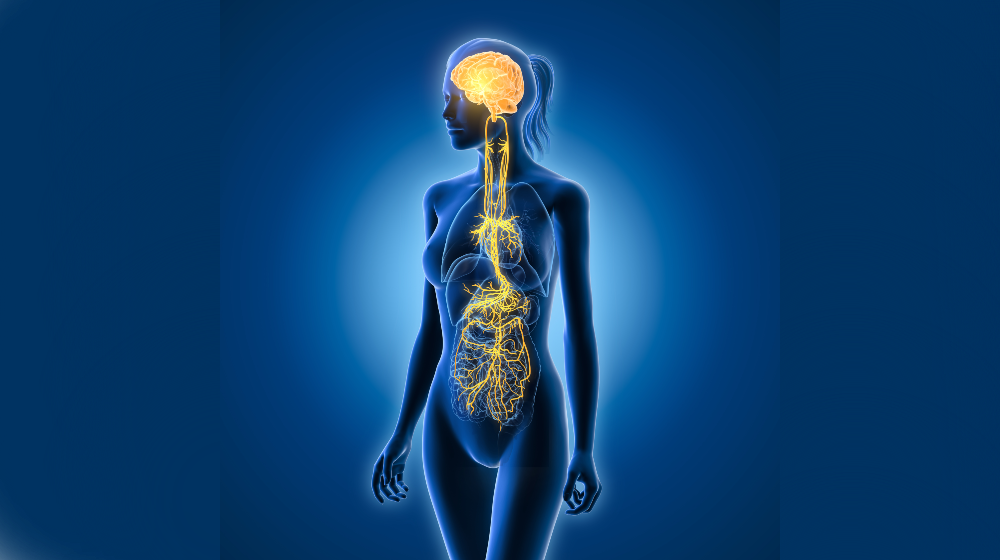University of Minnesota awarded $21M to lead research revealing effects of vagus nerve stimulation in humans

University of Minnesota Twin Cities researchers are leading a comprehensive global clinical study that seeks to reveal the functional effects of vagus nerve stimulation (VNS) across the human body.
The Research Evaluating Vagal Excitation and Anatomical Links (REVEAL) project is a $21 million National Institutes of Health-funded project that will take place over three years. REVEAL aims to study the anatomical connections and functional effects of vagus nerve stimulation, or VNS, which is an FDA-approved treatment for epilepsy and depression.
REVEAL incorporates a large-scale clinical study with up to 144 VNS patients along with three ancillary studies. Together, these studies will assess autonomic, cardiovascular, metabolic, immune, and gastrointestinal function in response to a broad range of VNS parameters. Researchers hope to generate one of the largest publicly available datasets on VNS function in humans.
“The vagus nerve conveys information from the brain to most organs in the body and vice versa,” said John Osborn, PhD, a professor of surgery at the University of Minnesota Medical School and director of the Minnesota Consortium for Autonomic Neuromodulation. “Dysregulation of the vagus nerve underlies many pathological conditions, and we are just now discovering ways to modulate it to treat them.”
“VNS has a proven record treating refractory epilepsy and depression,” said Ziad Nahas, MD, a professor at the University of Minnesota Medical School and a psychiatrist at M Physicians. “The exciting aspect of REVEAL is that it will set the stage for novel therapeutic applications of VNS to autonomic, immune, cardiovascular, and metabolic diseases.”
During the REVEAL studies, participants with implanted VNS devices will receive a wide range of tests to measure physiological, molecular, imaging, genetic, and neural responses to VNS, along with many other experimental and computational outcomes.
“A project involving so many types of measures and physiological systems requires a huge interdisciplinary team. We are fortunate to bring unique experts together involving more than 40 researchers from around the world, including 30 from the University of Minnesota,” said Hubert Lim, PhD, a biomedical engineering professor in the University of Minnesota College of Science and Engineering with a joint appointment in the Medical School.
A part of NIH’s Stimulating Peripheral Activity to Relieve Conditions (SPARC) initiative, REVEAL is funded — award number 1U54AT012307 — by NIH Common Fund and administered by the National Center for Complementary and Integrative Health. People interested in participating can send a query to [email protected].
From the University of Minnesota, the study team includes faculty from multiple departments across the Medical School, the College of Science and Engineering, and the School of Public Health. These faculty also represent the Center for Neuroengineering, the Institute for Engineering in Medicine, the Center for Quality Outcomes, Discovery and Evaluation (C-QODE) and the Minnesota Consortium for Autonomic Neuromodulation.
Osborn, Nahas, and Lim, are joined by three other REVEAL principal investigators: Sayeed Ikramuddin, the chair of the surgery department in the Medical School; Lynn Eberly, an associate dean for faculty affairs and professor in the School of Public Health; and Vaughan Macefield, a professor at Monash University in Melbourne, Australia.
Collaborating institutions include Mayo Clinic in Minnesota; Monash University in Australia; Stanford School of Medicine; Washington University in St. Louis; Medical University of South Carolina; Sheppard Pratt in Maryland; and Scuola Superiore Sant’Anna in Italy. Company partners include LivaNova, BRIGHT Research Partners, and BIOS Health.
-30-
About the University of Minnesota Medical School
The University of Minnesota Medical School is at the forefront of learning and discovery, transforming medical care and educating the next generation of physicians. Our graduates and faculty produce high-impact biomedical research and advance the practice of medicine. We acknowledge that the U of M Medical School, both the Twin Cities campus and Duluth campus, is located on traditional, ancestral and contemporary lands of the Dakota and the Ojibwe, and scores of other Indigenous people, and we affirm our commitment to tribal communities and their sovereignty as we seek to improve and strengthen our relations with tribal nations. For more information about the U of M Medical School, please visit med.umn.edu.
About the College of Science and Engineering
The University of Minnesota College of Science and Engineering brings together the University’s programs in engineering, physical sciences, mathematics and computer science into one college. The college is ranked among the top academic programs in the country and includes 12 academic departments offering a wide range of degree programs at the baccalaureate, master's, and doctoral levels. Learn more at cse.umn.edu.
About the School of Public Health
The University of Minnesota School of Public Health improves the health and wellbeing of populations and communities around the world by bringing innovative research, learning, and concrete actions to today’s biggest health challenges. We prepare some of the most influential leaders in the field, and partner with health departments, communities, and policymakers to advance health equity for all. Learn more at sph.umn.edu.




